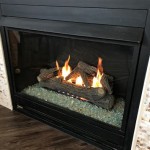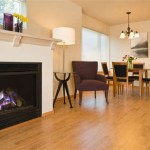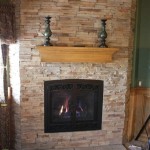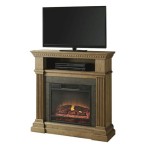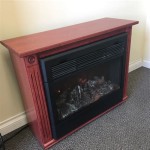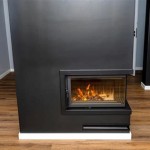Turning Off a Pilot Light Gas Fireplace: A Comprehensive Guide
Pilot light gas fireplaces offer a convenient and aesthetically pleasing source of supplemental heat. However, there are times when it becomes necessary or desirable to turn off the pilot light. This could be for seasonal reasons, safety concerns, or during extended periods of non-use. Understanding the procedure for safely and effectively turning off the pilot light is crucial for maintaining the fireplace and ensuring household safety.
This article provides a detailed, step-by-step guide on how to turn off a pilot light gas fireplace. It also addresses potential reasons for doing so and highlights important safety considerations that should be observed throughout the process. The information presented aims to equip homeowners with the knowledge necessary to manage their gas fireplaces responsibly.
Why Turn Off the Pilot Light?
Several reasons may prompt an individual to turn off the pilot light in a gas fireplace. One common reason is seasonal changes. During warmer months, the fireplace is generally not needed for heating purposes. Leaving the pilot light burning unnecessarily consumes gas, resulting in increased energy bills. Turning it off during the off-season can lead to significant energy savings over time.
Another reason to extinguish the pilot light is safety. If a gas leak is suspected, immediately turning off the gas supply, including the pilot light, is paramount. Gas leaks can pose serious health risks and even lead to explosions. Similarly, if the fireplace is not functioning correctly or requires repairs, it is advisable to turn off the pilot light to prevent any potential hazards during the repair process.
Furthermore, extended periods of vacancy necessitate turning off the pilot light. If the property will be unoccupied for weeks or months, such as during a vacation or relocation, shutting off the gas supply, including the pilot light, minimizes the risk of gas leaks and potential accidents while no one is present to monitor the system. It also minimizes any wasted gas consumption during the prolonged absence.
Step-by-Step Instructions for Turning Off the Pilot Light
Turning off the pilot light on a gas fireplace is a relatively straightforward procedure, but it requires careful attention to detail and adherence to safety protocols. The following steps outline the process:
- Locate the Gas Valve: The first step is to identify the gas valve that controls the gas supply to the fireplace. This valve is typically located near the fireplace itself, often behind an access panel or on the floor. It may be labeled "Gas Valve" or have a similar indicator.
- Identify the Pilot Control Knob: Once the gas valve is located, find the pilot control knob. This knob is usually near the pilot light assembly and may be labeled with positions such as "On," "Off," and "Pilot."
- Turn the Control Knob to the "Off" Position: Gently push in and turn the pilot control knob to the "Off" position. It may be necessary to depress a button or release a safety latch to rotate the knob. Ensure the knob is securely locked in the "Off" position.
- Close the Main Gas Valve: After turning off the pilot control knob, locate the main gas valve that supplies gas to the entire fireplace unit. This valve is usually a quarter-turn valve. Rotate the valve so that it is perpendicular to the gas pipe. This action shuts off the gas supply to the fireplace. If it's parallel, the gas is on.
- Wait for a Few Minutes: After shutting off the gas supply, wait a few minutes to allow any residual gas in the lines to dissipate. This reduces the risk of gas buildup and potential hazards when working around the fireplace.
- Check for Gas Odor: Carefully check for any lingering gas odor. If a strong gas smell is detected, immediately evacuate the area and contact the gas company or a qualified technician. Do not attempt to ignite any flames or operate any electrical devices until the area is deemed safe.
Essential Safety Considerations
Prioritizing safety is paramount when working with gas appliances. Before initiating any procedures, it is essential to ensure proper ventilation in the area. Open windows and doors to allow fresh air to circulate and prevent the accumulation of gas fumes.
Never force any valves or knobs. If a valve or knob is difficult to turn, do not apply excessive force. This could damage the valve and potentially cause a gas leak. Instead, consult a qualified technician who can diagnose and resolve the issue safely.
If there is any uncertainty or unfamiliarity with the fireplace's operation, it is strongly recommended to seek assistance from a qualified gas appliance technician. A professional can provide guidance, perform necessary maintenance, and ensure the safe operation of the fireplace. Regular maintenance can prevent problems and improve efficiency.
Furthermore, it is important to keep flammable materials away from the fireplace. Fabrics, paper, and other combustible items should be stored a safe distance from the unit to prevent accidental ignition. Adhering to these precautions can significantly reduce the risk of fire and ensure the safe operation of the gas fireplace.

How To Shut Off Gas Fireplace With Standing Pilot

Gas Fireplace Keeps Shutting Off Here S What You Can Do
How To Turn Off Your Fireplace S Pilot Light Safely Quora
How To Turn Off Your Fireplace S Pilot Light Safely Quora

How To Fully Turn Off A Propane Or Gas Fireplace

3 Simple Ways To Turn Off A Pilot Light Wikihow

How To Turn On And Off A Gas Fireplace Line Pilot Light

How To Fully Turn Off A Propane Or Gas Fireplace

Gas Fireplace Keeps Shutting Off Here S What You Can Do

Should I Turn Off The Pilot Light In Spring B C Comfort Fireplace Hvac Repair Installation
Related Posts

